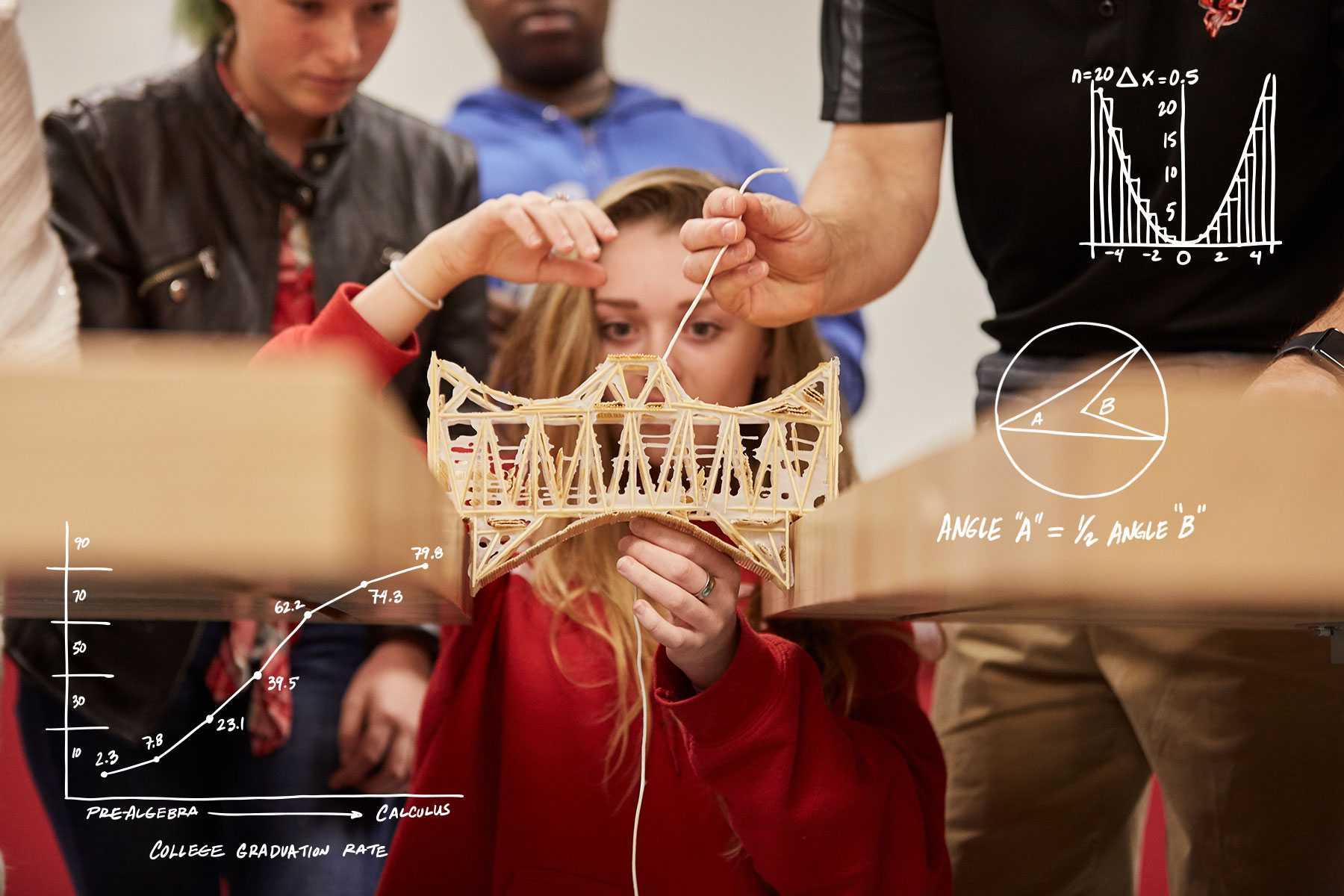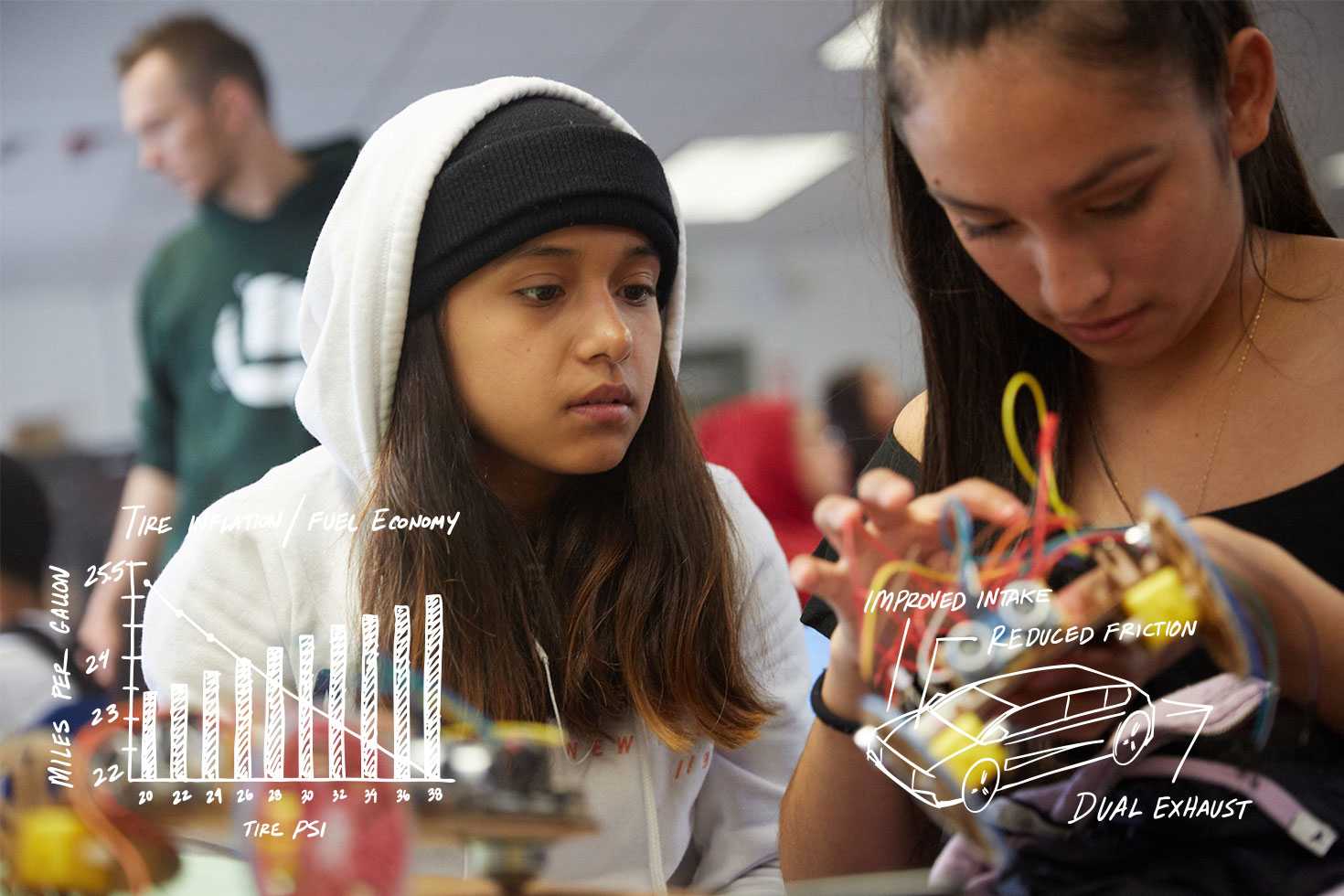1. Adolescence is a critical time for brain development.

Research is changing our understanding of the adolescent brain.
Fact:
Scientists have discovered that IQ can increase significantly during the teenage years.
Source: Nature
Until recently, scientists believed that the vast majority of brain development took place in early childhood. Research over the past decade, however, has shifted the way we look at how the brain develops over time. We now know that the structure and function of the brain continue to develop significantly during the adolescent years.
For educators, the lesson is simple and encouraging: you can’t give up on high school students, because their development is far from over. When young people think deeply, make connections, and develop higher-order thinking skills, they’re not just adding to what they know—they’re building the fundamental capacity of their brains.
Researchers at the University of Oregon used fMRI (functional magnetic resonance imaging) to identify what parts of the brain develop later in life. They found that, for teenagers, the prefrontal cortex—the part of the brain responsible for things like decision-making, impulse control, and prioritization—continues to build over time and functions differently than the brains of younger children or adults. This helps us understand why teenagers sometimes act in ways that seem risky or unpredictable. It also is proof that high school is a critical time to engage students in new, creative ways of learning and doing.
Science also confirms that, for adolescents, learning is social, and that caring, trusting relationships are tremendously important. Good learning environments should provide young people opportunities to develop their identity and safely take risks to challenge themselves and envision themselves as the adults they want to become.
“Adolescence … is a time when young people are searching for meaning and larger purpose, not as abstract rational ideas, but in ways that connect to their igniting passions and lead to inspired goals that can influence an entire lifetime.”
– World Economic Forum, 2018
How can high schools help students develop a growth mindset? Experts Michele Cahill, Geoffrey Canada, and Monica Martinez reflect on that question.
View all videosDive Deep
![a student playing a saxophone]() How Students Thrive
How Students ThriveLet’s design schools with the science of youth development in mind. This report from Springpoint Schools summarizes key research.
Read![pencil erasers]() Age of Opportunity
Age of OpportunityListen to WBUR’s interview with Laurence Steinberg about the new science of adolescence and read an excerpt from his book, "The Age of Opportunity."
Listen and Read![a circuitboard]() Stages of Brain Development
Stages of Brain DevelopmentTo understand and visualize the stages of brain development, including early and late adolescence, check out this report from Aspen Institute.
Explore![a student looking forward]() Mysteries of the Adolescent Brain
Mysteries of the Adolescent BrainSarah-Jayne Blakemore, of University College London, explains why scientists are finally able to work toward a clear picture of how adolescent brains develop.
Watch
Analyze
In How Students Thrive: Positive Youth Development in Practice, Springpoint Schools highlights five tenets of school designs that foster positive youth development:
- Caring, trusting, and supportive relationships
- High expectations
- Voice, choice, and contribution
- Intentionally engaging learning experiences
- Consistency
Step 1 – Research
Brainstorm two or three specific practices you could build into your school design to reflect each tenet. Take into account the diversity of young people’s everyday experiences in your community. Present your ideas to local experts—psychologists, youth services providers, counselors, or afterschool educators—to get additional suggestions. And, of course, discuss your ideas with students.
Step 2 – Reflect
Share findings with your team and discuss the following questions:
- What practices will most effectively cultivate positive youth development? Why?
- How would you summarize your ideas? How might you implement them in your school?
- What is the potential impact of your ideas on a broad range of students and experiences?




